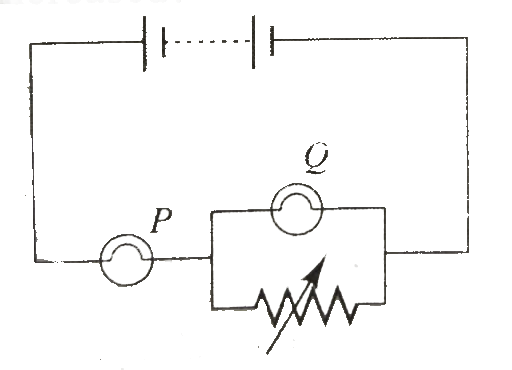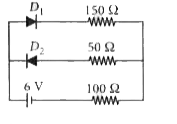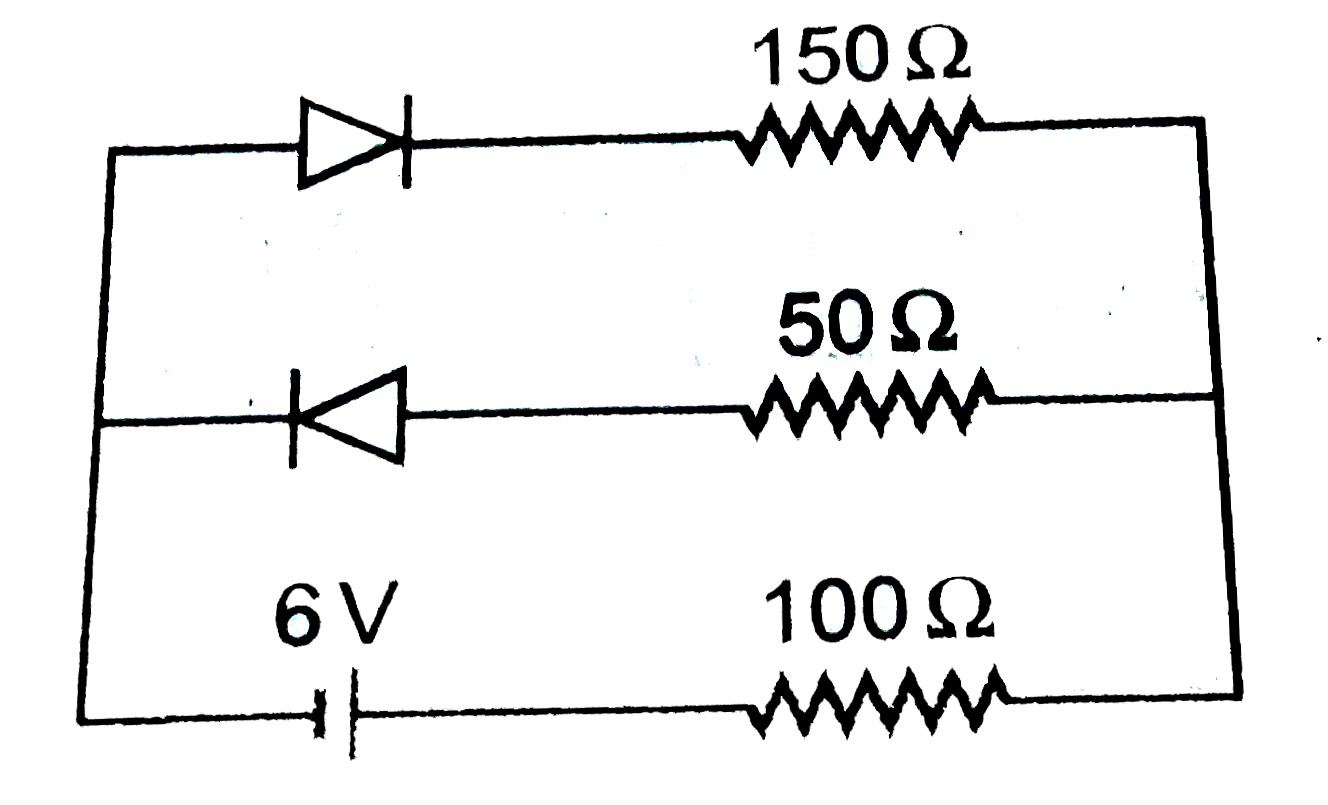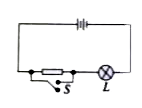The circuit shown in the diagram contains a battery "B" a rheostat "Rh" and identical lamps P and Q. What will happen to the broghtness of the lamps, if the resistance through the rheostat is increased? Give reasons.

Rh is connected in parallel with lamp Q. As the resistance through Rh is increased, the resistance of the parallel combination increases and so, the total resistance of the circuit increases. This results in decrease in the current in the whole circuit and also, potential drop across it will decrease. This will decrease the brightness of lamp P. On the other hand, brightness of lamp Q increases because its resistance remains same but due to decrease in potential difference across P, potential acorss it increases.
Topper's Solved these Questions
- CURRENT ELECTRICITYBOOK - MODERN PUBLICATIONCHAPTER - CURRENT ELECTRICITYEXERCISE - REVISION EXERCISES (LONG ANSWER QUESTIONS)
10 Videos
- CURRENT ELECTRICITYBOOK - MODERN PUBLICATIONCHAPTER - CURRENT ELECTRICITYEXERCISE - REVISION EXERCISES (NUMERICAL PROBLEMS)
24 Videos
- CURRENT ELECTRICITYBOOK - MODERN PUBLICATIONCHAPTER - CURRENT ELECTRICITYEXERCISE - REVISION EXERCISES (FILL IN THE BLANKS)
10 Videos
- ATOMS BOOK - MODERN PUBLICATIONCHAPTER - ATOMS EXERCISE - Chapter Practice Test
16 Videos
- DUAL NATURE OF RADIATION AND MATTER BOOK - MODERN PUBLICATIONCHAPTER - DUAL NATURE OF RADIATION AND MATTER EXERCISE - CHAPTER PRACTICE TEST
15 Videos
Similar Questions
The circuit shownin Fig. 7.33 contains a battery , a rheostat , and two identical lamps. What will happen to the brightness of the lamps if the resistance of the rheostat is increased?

View SolutionThe circuit shownin Fig. 7.33 contains a battery , a rheostat , and two identical lamps. What will happen to the brightness of the lamps if the resistance of the rheostat is increased?

View Solution
Knowledge Check
The circuit shownin Fig. 7.33 contains a battery , a rheostat , and two identical lamps. What will happen to the brightness of the lamps if the resistance of the rheostat is increased?
 ALamp P - Less bright , Lamp Q - BrighterBLamp P - Less brighter , Lamp Q - Less brighterCLamp P - Brighter , Lamp Q - Less brighterDLamp P - No change , Lamp Q - Brighter
ALamp P - Less bright , Lamp Q - BrighterBLamp P - Less brighter , Lamp Q - Less brighterCLamp P - Brighter , Lamp Q - Less brighterDLamp P - No change , Lamp Q - BrighterThe circuit shown in the figure contains two diodes each with a forward resistance of 50 ohm and with infinite backward resistance. If the battery voltage is 6 V, the current through the 100 ohm resistance (in ampere) is
 AzeroB0.02C0.03D0.033
AzeroB0.02C0.03D0.033The circuit shown in the figure contains three diodes each with forward resistance of 50 ohms and with infinite backward resistance. If the battery voltage is 6 V, the current through the 100 ohm resistance is
 A0B36 mAC43 mAD50 mA
A0B36 mAC43 mAD50 mA
The circuit shown in figure contains two diodes each with a forward resistance of 50Ω and infinite reverse resistance.If the battery voltage is 6 v ,then the current through the 100Ω resistance is
View SolutionThe circuit shown in the figure contains two diodes each with a forward resistance of 50 Ω and with infinite backward resistance. If the battery is 6 V, the current through the 100 Ω resistance (in ampere) is

View SolutionThe given figure shows an electric circuit in which a lamp L is connected .What happens to the brightness of the lamp L when the switch S is closed ?
(Box represents extra resistance in the circuit.)

View SolutionThe circuit shown in the figure contains two diodes each with a forward resistance of 30 Ω and with infinite backward resistance. If the battery is 3 V, the current through the 50 Ω resistance (in ampere) is

View SolutionThe circuit shown in the figure contains two diodes each with a forward resistance of 30 Ω and with infinite backward resistance. If the battery is 3 V, the current through the 50 Ω resistance (in ampere) is

View Solution
